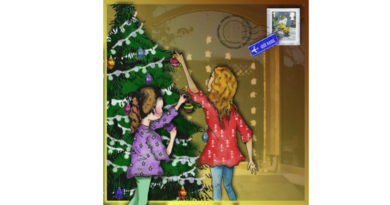Last Child in the Woods
The ultimate Easter experience for me as a child was to hunt Easter eggs outside. Growing up in New Jersey, where Eastertide was still chilly and wet, I only had this opportunity when we visited my grandmother in Texas one spring, for a warm, sunny Easter. My siblings and I were so excited. Looking back at this mindset, I wonder why the same boiled eggs hidden outside were so much more thrilling than in our house. And I can still feel the answer in my solar plexus: outside was magic; it was larger and more mysterious: the eggs could be anywhere, and they could have come from anywhere. Well, I was probably a suggestible kid.
Nature can have this pull on anyone, no matter whether she is suggestible and dreamy or a more practical type. Indeed, it should pull at you, and if it does not, something might need to be fixed. Wake up and smell the great outdoors! And remember to bring your kids.
The book Last Child in the Woods by Richard Louv was first published 10 years ago, and then in a revised edition in 2008. Perhaps you have heard of it. It is an excellent book, bringing together studies that indicate that direct exposure to nature is fundamental to children’s healthy development. In the book, Louv coined the term “nature deficit disorder” to describe the effects of our living at a distance from nature, including “diminished use of the senses, attention difficulties, and higher rates of physical and emotional illnesses.”
Louv discusses an important concept in his book: biophilia. Biophilia is a hypothesis of scientist and author Edward O. Wilson, describing the human “urge to affiliate with other forms of life.” It is a concept both simple and complex: we are alive and need other life forms (whether for food or companionship, for example) to sustain life. Nature is more unpredictable and therefore ultimately more interesting to our living brains than measured, manmade objects.
Solving problems in nature, such as navigating uneven natural terrain or building a structure using only found objects, is good for us. We are not in pursuit of a pre-ordained answer (as in a computer game), but rather working organically toward a personal goal. Helping our children’s brains “grow” through such pastimes is a good start for their lives in a world that, despite humanity’s best engineering efforts, will always be changeable.
Louv’s 2008 edition contains a “field guide” with 100 actions to take against nature-deficit disorder. Dump a load of dirt into your yard for the kids to dig in; go fishing, buy field guides for your kids – there are many different ways to inspire your children to get out into nature for themselves. It is not enough for parents to take their kids on organized forays into nature: for children to develop the important, meaningful bond between themselves and the natural world, they need to learn to explore it for themselves and find their own special places in it.
Look for the edges between habitats: where the trees stop and field begins; where rocks and earth meet water. Life is always at the edges (p. 173).
I worry about the future of nature and humans. We are already so far gone in terms of population growth and resource exploitation that it may always be a struggle to have a balanced life in terms of interacting with nature. Of course, there are many parents who already make sure that their children have unstructured playtime in nature. It can be much more difficult for less-privileged parents who might have to work overtime just to support a family, and might live in the middle of a city. We should support, promote, and vote for any programs that bring humans closer to nature. Some of Louv’s suggestions in the above-mentioned “field guide” also discuss steps that public institutions can take to increase everyone’s access to the natural world.
Read or re-read Last Child in the Woods as a strong reminder to help your children attach to the natural world around them, which is the best way to help them grow into people concerned with the greater environment, who can solve real-world problems with organic thinking. By the way, on the website for the book, Richard Louv provides, among other things, an overview and an excerpt of Last Child in the Woods, as well as a resource guide with nature activities, a list of books, and helpful links.
By Carol McDonald
Carol has lived in Zurich with her family for the past 16 and a half years. She is happy that her children grew up in a city where the forest is never far away, children are encouraged to walk to school, and kindergarten and school “forest days” don’t get cancelled just because of a little rain.
Illustration by Sharanya Mageshwaran
Sharanya Mageshwaran is a stay-at-home mom of a very naughty three-year-old who speaks better German than her mother does. Before moving to Zurich, Sharanya was a pharmaceutical research scientist in India. She loves painting and sketching with fauvist expressionist abstract themes. More of her artwork can be see here: http://somelightandcolor.blogspot.ch/
Text of article © copyright: Carol McDonald. 2015. All rights reserved. No part of this article may be reproduced without the express consent of the author.





I have to get this book! I so totally agree that kids need to be outside every day to explore nature and discover things on their own.